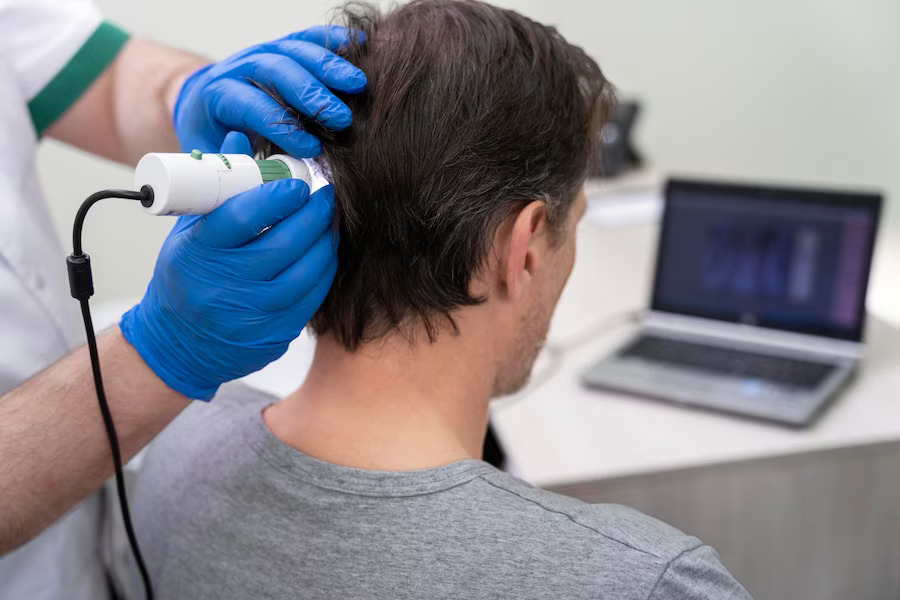Scalp Micro Pigmentation (SMP)

Scalp Micro Pigmentation (SMP) is a non-surgical cosmetic procedure that involves the application of specialized pigments to the scalp to create the appearance of a closely cropped hairstyle or to simulate the look of hair follicles. It is often used as a solution for individuals with hair loss, thinning hair, or those seeking to conceal scars on the scalp.
During an SMP procedure, a skilled practitioner uses a fine needle or a tattoo gun to deposit pigment into the superficial layers of the scalp. The pigment is matched to the individual’s hair color and skin tone to achieve a natural-looking result. The process involves creating small, dot-like impressions that mimic the appearance of hair follicles or areas of shading to create the illusion of density.
SMP can be used to address various types of hair loss, including male and female pattern baldness, alopecia areata, scarring alopecia, and thinning hair. It can also be used to enhance the results of hair transplant surgeries by creating the illusion of fuller hair.
The benefits of SMP include:
Camouflage: SMP can effectively conceal areas of hair loss, creating the appearance of a fuller head of hair or a closely cropped hairstyle.
Low maintenance: Once the SMP procedure is complete, there is minimal maintenance required. The pigmented areas typically do not require regular styling or grooming.
Non-surgical: SMP is a non-invasive procedure that does not involve surgical incisions or the use of medications. It is generally considered safe and has a quick recovery time.
It’s important to note that SMP is a cosmetic procedure and does not promote the actual regrowth of hair. It is purely a visual solution for individuals looking to improve the appearance of their scalp and hairline.
Before undergoing SMP, it is essential to consult with a reputable SMP practitioner or a specialized clinic. They can assess your suitability for the procedure, discuss your expectations, and create a customized treatment plan. It’s also important to consider factors such as the skill and experience of the practitioner, as well as the quality of the pigments used, to ensure the best possible outcome.

